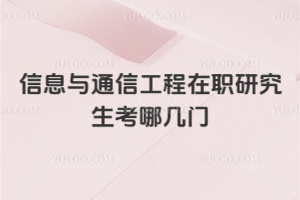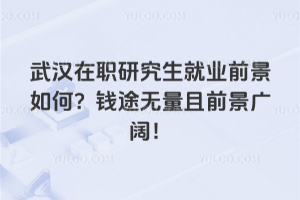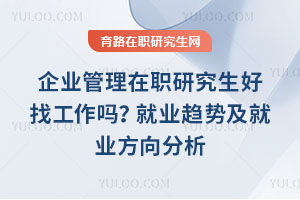- 微信公眾號

政策解讀
- 微信小程序

快速擇校

政策解讀

快速擇校
Passage 5
The world is going through the biggest wave of mergers and acquisitions ever witnessed. The process sweeps from hyperactive America to Europe and reaches the emerging countries with unsurpassed might. Many in these countries are looking at this process and worrying: “Won’t the wave of business concentration turn into an uncontrollable anti-competitive force?”
There’s no question that the big are getting bigger and more powerful. Multinational corporations accounted for less than 20% of international trade in 1982. Today the figure is more than 25% and growing rapidly. International affiliates account for a fast-growing segment of production in economies that open up and welcome foreign investment. In Argentina, for instance, after the reforms of the early 1990s, multinationals went from 43% to almost 70% of the industrial production of the 200 largest firms. This phenomenon has created serious concerns over the role of smaller economic firms, of national businessmen and over the ultimate stability of the world economy.
I believe that the most important forces behind the massive M&A wave are the same that underlie the globalization process: falling transportation and communication costs, lower trade and investment barriers and enlarged markets that require enlarged operations capable of meeting customer’s demands. All these are beneficial, not detrimental, to consumers. As productivity grows, the world’s wealth increases.
Examples of benefits or costs of the current concentration wave are scanty. Yet it is hard to imagine that the merger of a few oil firms today could re-create the same threats to competition that were feared nearly a century ago in the U.S., when the Standard Oil trust was broken up. The mergers of telecom companies, such as WorldCom, hardly seem to bring higher prices for consumers or a reduction in the pace of technical progress. On the contrary, the price of communications is coming down fast. In cars, too, concentration is increasing — witness Daimler and Chrysler, Renault and Nissan — but it does not appear that consumers are being hurt.
Yet the fact remains that the merger movement must be watched. A few weeks ago, Alan Greenspan warned against the megamergers in the banking industry. Who is going to supervise, regulate and operate as lender of last resort with the gigantic banks that are being created? Won’t multinationals shift production from one place to another when a nation gets too strict about infringements to fair competition? And should one country take upon itself the role of “defending competition” on issues that affect many other nations, as in the U.S. vs. Microsoft case?
1. What is the typical trend of businesses today?
A. to take in more foreign funds
B. to invest move abroad
C. to combine and become bigger
D. to trade with more countries
2. According to the author, one of the driving forces behind the M&A wave is ______.
A. the greater customer demands
B. a surplus supply for the market
C. a growing productivity
D. the increase of the world’s wealth
3. From paragraph 4 we can infer that ______.
A. the increasing concentration is certain to hurt consumers
B. WorldCom serves as a good example of both benefits and costs
C. the costs of the globalization process are enormous
D. the Standard Oil trust might have threatened competition
4. Toward the new business wave, the writer’s attitude can be said to be ______.
A. optimistic B. objective C. pessimistic D. biased
特別聲明:①凡本網(wǎng)注明稿件來源為"原創(chuàng)"的,轉(zhuǎn)載必須注明"稿件來源:育路網(wǎng)",違者將依法追究責(zé)任;
②部分稿件來源于網(wǎng)絡(luò),如有侵權(quán),請聯(lián)系我們溝通解決。

信息與通信工程在職研究生若通過同等學(xué)力申碩方式,入學(xué)無需考試。申碩階段考試一般考外語(如英語、法語等)和專業(yè)課(涵蓋信號與系統(tǒng)、通信原理等)。考試通過標(biāo)準(zhǔn)為及格...

電氣工程在職研究生若通過同等學(xué)力申碩方式,學(xué)費(fèi)一年在1.4萬-1.79萬元左右(學(xué)制多為2年)。如華北電力大學(xué)學(xué)費(fèi)3萬元,平均一年1.5萬元;河北工業(yè)大學(xué)學(xué)費(fèi)2...

武漢在職研究生就業(yè)前景良好,錢景也頗為可觀。同等學(xué)力申碩入學(xué)門檻低,畢業(yè)后學(xué)位證受認(rèn)可,利于晉升漲薪;非全日制研究生學(xué)歷學(xué)位雙證在考公、國企招聘等中優(yōu)勢明顯。不...

本文匯總北京多所高校在職研究生招生簡章,為職場人士提供全面報考指南。深入解析招生政策、報考條件及學(xué)習(xí)優(yōu)勢,幫助您把握職業(yè)發(fā)展機(jī)遇。錯過招生信息可能影響晉升機(jī)會,...

在職醫(yī)生報考醫(yī)學(xué)在職研究生需全面了解報考流程和條件。報考流程包括選擇院校、在線報名、提交材料、參加考試等步驟,需關(guān)注各階段時間節(jié)點(diǎn)。報考條件涉及醫(yī)學(xué)相關(guān)本科學(xué)歷...

企業(yè)管理在職研究生好找工作嗎?是否好找工作,取決于多種因素。數(shù)字化使管理能力迭代,行業(yè)需求分化,核心能力升級。其就業(yè)有政策與市場認(rèn)可等優(yōu)勢,院校、經(jīng)驗與學(xué)歷匹配...
評論0
“無需登錄,可直接評論...”